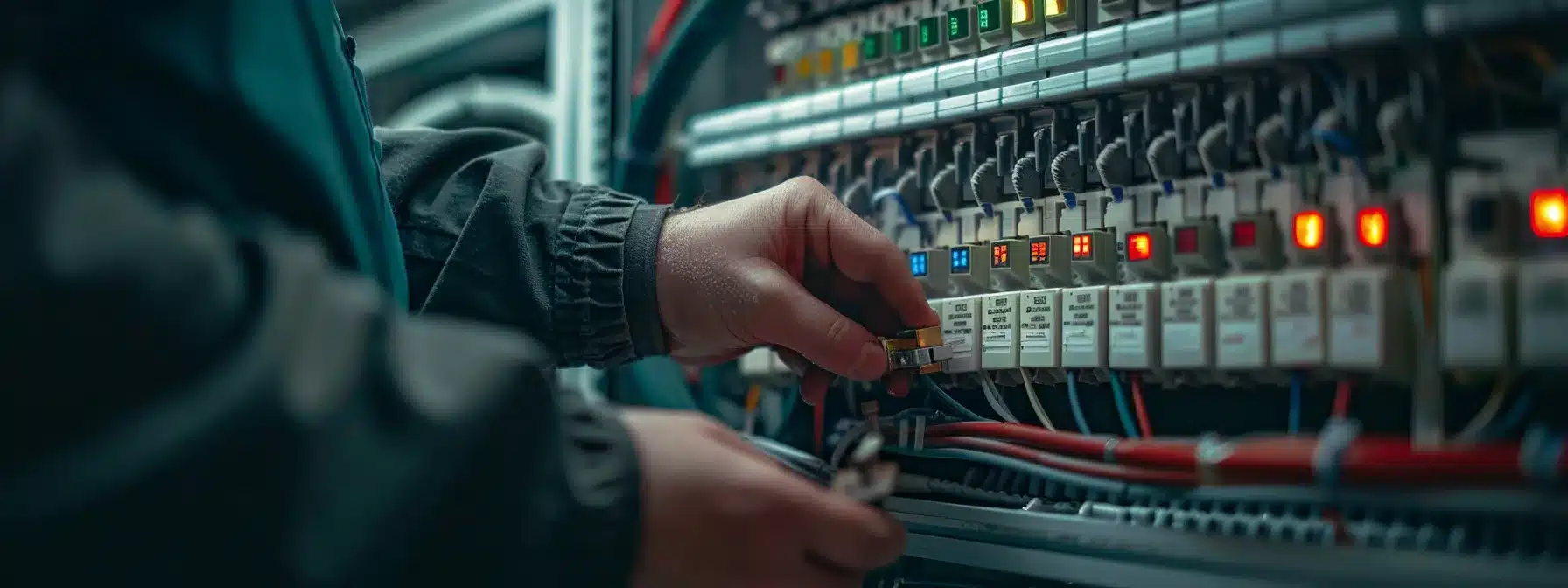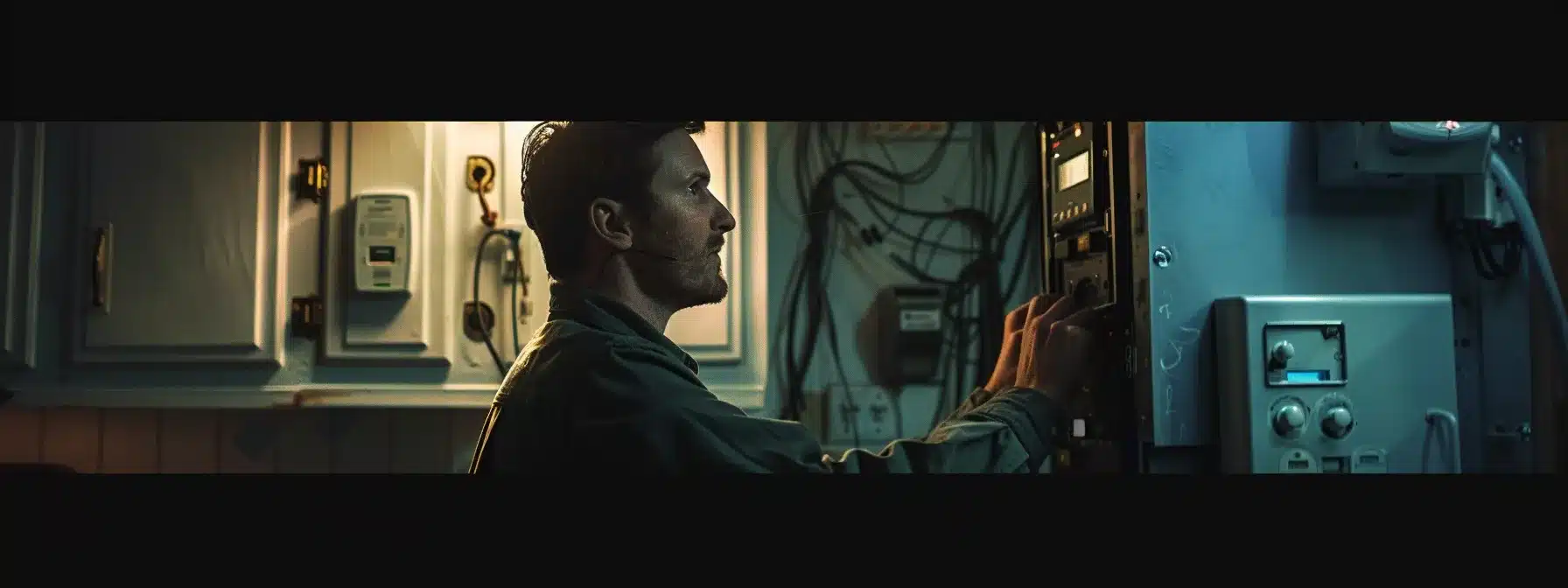When the unexpected happens, and an electrical emergency arises, knowing how to troubleshoot a circuit breaker can be a lifesaver. Whether it’s your home’s main panel or a circuit dedicated to a charging station, understanding the ins and outs of electrical systems is crucial. Our team of emergency electricians is here to provide valuable insights and tips tailored for every customer, ensuring you’re never left in the dark. With the right knowledge, you can pinpoint issues efficiently and maintain your electrical system effectively. Keep reading to discover practical steps and advanced techniques for tackling circuit breaker problems head-on!
Key Takeaways
- Regular inspections and testing can prevent major electrical issues before they escalate
- Recognizing signs of circuit breaker problems helps homeowners take timely action
- Understanding the difference between tripping and faults is crucial for safety
- Upgrading outdated components enhances the reliability and efficiency of electrical systems
- Immediate contact with a qualified electrician is vital when serious symptoms arise
Identifying Your Circuit Breaker Issue

When dealing with a circuit breaker issue, homeowners need to identify the signs that may indicate a failure. A sudden power outage can often point to problems within the system, such as a trip or fault that requires attention. Recognizing the difference between these two situations can save both time and money. Additionally, assessing how urgent the emergency electrician problem is helps determine whether immediate electrical services are needed. For instance, if the circuit breaker that controls the ceiling fan keeps tripping, it might be a sign of a deeper issue that can’t be ignored. Taking the right steps early on can prevent bigger headaches down the line.
Recognize the Signs of Circuit Breaker Failure
Recognizing the signs of circuit breaker failure is essential for maintaining a reliable power supply. Homeowners should look for frequent tripping, which can indicate an underlying issue within the electrical system. If the breaker trips repeatedly, it is a good idea to consult an electrician to assess the situation and ensure safety.
Other warning signs include unusual noises coming from the breaker box, like buzzing or cracking sounds. These noises could suggest a problem with the electrical engine that controls the power distribution. Ignoring these sounds may lead to bigger issues down the road, so it’s wise to address them promptly.
Lastly, if any circuits experience flickering lights or inconsistent power, it might signal that the circuit breaker is struggling or failing. This situation can be concerning, especially if it affects critical appliances or systems. A qualified electrician can provide a thorough assessment to pinpoint the exact problem and recommend the best course of action:
Understand the Difference Between a Trip and a Fault
When dealing with electrical systems, it’s essential to understand the difference between a trip and a fault. A trip usually occurs when the circuit breaker senses an overload of voltage or a short circuit, causing it to shut off power to prevent damage. Meanwhile, a fault indicates more severe issues within the electrical system, such as malfunctioning machinery that could lead to dangerous electrical emergencies.
During an inspection, electricians often look for these issues to keep systems running smoothly. A trip can be a quick fix, requiring a simple reset of the circuit breaker after addressing the cause. In contrast, a fault may require detailed diagnostics to pinpoint the problem and ensure that all lighting and machinery operate safely and efficiently.
- Electrical overload causing a trip
- Malfunctioning machine triggering a fault
- Importance of timely inspections
- Significance of addressing lighting issues
Assessing the Urgency of the Problem
When homeowners face a circuit breaker issue, it’s important to consider how urgent the situation really is. Troubleshooting starts with assessing whether the problem is a simple fuse blow or a more complex issue with the wiring. If a breaker trips but can be reset easily, it may not require immediate circuit breaker repair, but persistent problems could indicate deeper issues that need attention.
A quick evaluation is necessary, especially if low voltage is detected in certain areas. This condition can lead to inconsistent power, which may affect essential appliances. If a homeowner notices repeated fluctuations in voltage, taking action sooner rather than later can prevent further complications down the line, making it easier for technicians to pinpoint the issue and conduct any necessary repairs.
Once you’ve pinpointed the circuit breaker issue, it’s time to roll up your sleeves and tackle the problem head-on. Let’s jump into the initial steps for emergency circuit breaker troubleshooting that can set things right!
Initial Steps in Emergency Circuit Breaker Troubleshooting

Before jumping into troubleshooting a circuit breaker issue, safety comes first. Ensuring that the workspace is secure helps avoid any accidents during the process. It’s important to know how to properly reset the circuit breaker following any emergency incident, especially when dealing with an emergency power system. Checking the integrity of connected circuits and devices also plays a crucial role in making sure everything functions smoothly. Remember, whether it’s part of the installation process or related to elevator automation, understanding these initial steps not only keeps everyone safe but can also lead to better pricing options when seeking professional help for repairs.
Ensuring Safety Before Attempting Any Troubleshooting
Before diving into troubleshooting a circuit breaker problem, safety should always take precedence. Homeowners must familiarize themselves with the terms of service provided by their electrical providers and ensure that they’ve got reliable emergency service contacts on hand. This proactive approach helps them act quickly in case of an electrical fault, keeping everyone safe and secure.
It’s crucial to turn off any connected appliances before beginning any troubleshooting. This reduces the risk of shock and helps avoid further complications if a breaker needs resetting. Maintaining awareness of home automation systems can also minimize hazards, as these systems can sometimes trigger or respond unexpectedly during electrical issues.
Lastly, using proper tools and wearing protective gear is essential throughout the troubleshooting process. Homeowners should ensure their workspace is clear and well-lit, reducing distractions that could lead to accidents. Keeping an accessible email address for contacting professionals about potential electrical faults allows homeowners to seek expert advice swiftly if troubleshooting doesn’t resolve the issue:
- Familiarize with safety protocols.
- Disconnect all connected appliances.
- Wear protective gear and use the right tools.
- Contact professionals via email for expert advice.
How to Properly Reset Your Circuit Breaker
When the circuit breaker trips, knowing how to reset it safely is key for homeowners. Begin by first ensuring that all devices connected to the affected circuit, like light fixtures, are turned off. This precaution helps prevent overloads caused by a sudden influx of power after resetting.
Next, locate the breaker box and identify the tripped breaker, which usually appears in the OFF position or is noticeably out of line with the others. Carefully flip the switch back to the ON position. It’s essential to do this step cautiously, as a voltage spike can occur if the issue that caused the trip hasn’t been resolved.
If the circuit breaker trips again after resetting, it indicates that there may be more serious electrical issues at play. At this point, homeowners should consider reaching out for emergency electrical services for a thorough inspection. Regular electrical safety inspections can prevent these frustrating occurrences and ensure the home’s electrical system operates smoothly:
- Turn off all connected devices.
- Identify the tripped breaker.
- Reset the breaker carefully.
- If it trips again, contact emergency electrical services.
Verifying the Integrity of Connected Circuits and Devices
Verifying the integrity of connected circuits and devices is crucial, especially during an emergency. Homeowners should examine their transfer switch to ensure it is functioning properly. A faulty transfer switch can pose a significant risk, affecting the overall performance of the service circuit breaker and leading to potential power failures.
Next, checking all connected devices is essential. For instance, if the air conditioning system is on the same circuit, it’s vital to confirm that it isn’t causing undue stress on the service circuit breaker. This action helps prevent further complications and ensures that the system operates as intended.
Lastly, conducting a quick overview of the wiring and connections can pinpoint any irregularities. Loose or damaged wires can create hazards, especially when handling emergencies. Taking these preventive measures not only safeguards the electrical system but also gives homeowners peace of mind during unexpected outages.
With your circuit breaker issues identified, it’s time to roll up the sleeves and dig deeper. Get ready to uncover the most common problems that could be causing those pesky disruptions!
Diagnosing Common Circuit Breaker Problems

Understanding how to diagnose common circuit breaker problems helps minimize downtime and keep everything running smoothly. Frequent tripping can indicate an underlying issue that may stem from electrical overloads, often resulting from too many devices connected to a single relay. Identifying these overloads is crucial, as it allows homeowners to balance their power consumption and prevent further complications. Additionally, solutions for a malfunctioning circuit breaker, like upgrading to a more robust system or installing a backup option, can significantly enhance electrical stability. Homeowners seeking clarity on these issues often have FAQ resources available to guide them through troubleshooting as they navigate any emergency power situations.
Dealing With Frequent Tripping
Frequent tripping of a circuit breaker often stems from overloaded circuits. Homeowners should be mindful of the number of electronics plugged into a single outlet. If multiple high-powered devices are running simultaneously, they could easily push the circuit beyond its limits.
Another factor contributing to tripping could be faulty wiring or malfunctioning appliances. It’s wise to inspect devices regularly for any signs of wear or damage. If an appliance seems to be frequently causing issues, it may need servicing or replacement to avoid creating hazards.
Ultimately, taking proactive steps can help reduce frequent tripping in a home’s electrical system. Homeowners should consider spreading out electronics across multiple circuits and scheduling regular inspections to ensure everything is running smoothly and safely:
Identifying and Addressing Electrical Overloads
Electrical overloads are a common issue homeowners face, often leading to circuit breaker trips. It’s essential to recognize that an overload happens when too many devices draw power from a single circuit beyond its capacity. To prevent this, one should evaluate the devices plugged into outlets regularly and consider their power requirements.
A good practice is to distribute appliances across multiple circuits. For instance, instead of plugging a refrigerator, a microwave, and an air conditioner into one circuit, connecting them to different circuits can significantly reduce the risk of overloading. Taking these steps can help maintain a stable power flow throughout the home.
If an overload occurs, it’s crucial to act quickly to rectify the situation. Homeowners can start by disconnecting non-essential devices and observing if the breaker remains stable. Keeping track of what devices are used simultaneously can help identify potential overload issues before they escalate:
Solutions for a Malfunctioning Circuit Breaker
Homeowners dealing with a malfunctioning circuit breaker should first consider replacing it with a newer model designed for increased capacity. Often, older breakers may not handle the demands of modern appliances, leading to frequent issues. Upgrading to a more robust system can prevent persistent problems and enhance overall electrical safety.
Another effective solution is to ensure that the wiring in the home is up to code. Damaged or outdated wiring can strain the breakers, causing them to trip more often. Consulting with a qualified electrician to assess and upgrade wiring can significantly improve the reliability of the electrical system.
Additionally, providing a dedicated circuit for high-energy appliances is a simple yet useful approach. This means separating appliances that draw significant power, like refrigerators and air conditioners, onto their own circuits. This separation reduces the load on individual breakers, minimizing the chances of malfunctioning and enhancing the overall functionality of the home’s electrical system.
After uncovering the common circuit breaker problems, it’s time to tackle the tougher challenges. Join in as we explore advanced troubleshooting techniques that will help crack even the most stubborn electrical issues!
Advanced Troubleshooting Techniques for Persistent Issues

To tackle persistent circuit breaker issues effectively, homeowners can take several proactive steps that focus on inspecting and testing the components involved. A deep dive into the condition of circuit breakers, wiring, and devices can uncover hidden problems that might be causing disruptions. Knowing when to bring in a professional electrician is key, especially when troubleshooting goes beyond basic checks. Lastly, establishing a routine maintenance plan can prevent emergencies before they start, ensuring that the electrical system remains in top shape for the long haul. Together, these approaches equip homeowners with the tools necessary to deal with ongoing electrical concerns with confidence.
Inspecting and Testing Circuit Breaker Components
The first step in inspecting circuit breaker components involves checking for any physical damage. Homeowners should look for signs of wear, such as burn marks or melted plastic, which can indicate overheating or faults within the breaker. Addressing these issues promptly may prevent more serious electrical failures.
Next, it’s essential to test the breaker’s functionality. Using a multimeter, users can measure the voltage output and determine if the breaker is supplying power as expected. If any inconsistencies arise during testing, it may be time to consider replacing the breaker to ensure safety and efficiency.
Finally, inspecting the connections in the breaker box is crucial. Loose wires can lead to poor connectivity, causing tripping issues or even potential fire hazards. Tightening connections and ensuring they are secure can significantly improve the overall performance of the circuit breaker system:
- Check for physical damage on the breaker.
- Test functionality with a multimeter.
- Inspect and tighten wire connections.
When to Escalate to a Professional Electrician
Recognizing when to call in a professional electrician is crucial for maintaining safety and avoiding further complications. If homeowners continuously encounter issues despite their own troubleshooting efforts, it’s best to reach out for expert assistance. This can prevent fizzling wiring or overloaded systems from escalating into more serious electrical hazards.
Additionally, if any unusual signs like smoke, burning odors, or excessively hot surfaces appear, it’s a clear sign to escalate the situation immediately. Ignoring these warning signals can lead to fires or severe damage to home electrical systems. Swift action in contacting a qualified electrician can keep everyone safe and protect valuable property.
Professional electricians have the training and tools needed to diagnose and tackle complex circuit issues effectively. They can perform thorough inspections that identify underlying problems that a homeowner may miss. In particular cases where electrical configurations are outdated or not up to code, relying on a professional’s expertise is essential for ensuring reliable and safe functionality:
Maintenance Tips to Prevent Future Emergencies
Regular maintenance checks are key to ensuring a circuit breaker functions well and minimizes emergency situations. Homeowners should schedule annual inspections with a qualified electrician to assess the integrity of the electrical system. This proactive step can help identify potential issues before they turn into significant problems.
Keeping track of how many devices are connected to each circuit also helps prevent overloads. Homeowners should be mindful of the power requirements of their appliances and spread them out accordingly. By doing so, they can maintain a balanced load that reduces the chances of breaker trips, keeping the electrical system stable.
Lastly, ensuring that the home’s wiring meets current safety codes plays a vital role in preventing future electrical issues. Upgrading outdated wiring can help prevent hazards and improve overall performance. Addressing these areas helps create a safer environment for everyone in the home:
As pesky electrical problems linger, it’s time to tackle the potential culprit head-on. Let’s dive into the ins and outs of replacing or repairing a faulty circuit breaker to restore that peace of mind in your home.
Replacing or Repairing a Faulty Circuit Breaker

Understanding whether to repair or replace a faulty circuit breaker is crucial for maintaining a functional electrical system. Homeowners often face this decision when frequent tripping or signs of damage occur. A straightforward assessment can guide them in choosing the best option. After deciding, a step-by-step approach for replacing the circuit breaker ensures proper installation and safety. Testing the new or repaired breaker afterward also helps confirm that everything is working as intended, giving homeowners peace of mind about their electrical setup. This process guarantees that the circuits remain in good condition, reducing chances of future issues and keeping the home running smoothly.
Deciding Between Repair or Replacement
When homeowners face circuit breaker issues, they often weigh the choice between repairing or replacing the unit. A simple inspection can help in determining the severity of the problem. If the breaker exhibits minor issues or if it only occasionally trips, a repair may suffice, giving the homeowner a quick fix without the need for complete replacement.
In contrast, if the circuit breaker shows significant damage or consistently fails to function, replacement becomes the smarter option. An outdated or malfunctioning breaker can lead to safety hazards, and replacing it ensures that the electrical system operates effectively. Homeowners should consider how often the breaker trips and look for signs such as burn marks or melted components that may warrant a full replacement.
Ultimately, deciding between repair and replacement hinges on the home’s electrical needs and safety considerations. Homeowners should always consult with a licensed electrician for a professional evaluation. Taking the guesswork out of the equation can prevent further issues and maintain the reliability of their electrical system for years to come.
Step-by-Step Guide to Replacing a Circuit Breaker
To start replacing a circuit breaker, ensure all safety precautions are in place. This means turning off the main power supply before reaching for the breaker box. It’s essential to wear insulated gloves to avoid any electrical hazards during the process.
Next, gently remove the panel cover from the breaker box, revealing the circuit breakers inside. Homeowners should identify the faulty breaker, often marked by a clear break from the other switches. After identifying it, carefully detach the wires connected to the breaker, making sure to remember where each wire goes for reinstallation.
Once the wires are disconnected, homeowners can take out the old breaker and install the new one by reversing the previous steps. They should connect the wires to the appropriate terminals, ensuring a secure fit. Finally, replacing the panel cover and turning the main power back on completes the process, allowing the new breaker to restore power safely to the designated circuit.
Testing Your Circuit Breaker After Repair or Replacement
After replacing or repairing a circuit breaker, it’s vital to test its functionality to ensure everything is working smoothly. Homeowners should start by flipping the breaker back on and checking if it stays in the ON position without tripping. A stable breaker indicates the installation was successful and that the circuit is ready for use.
Next, it’s a good idea to monitor the circuit for any unusual behaviors, like flickering lights or sudden power drops. If everything seems to operate correctly, that’s a great sign that the new or repaired breaker is functioning as it should. Keep an eye on the area for a little while to make sure the peace continues.
Lastly, if the breaker trips again soon after testing, it signals a deeper issue that might need professional attention. In such cases, bringing in a qualified electrician can help tackle any underlying problems and ensure the electrical system remains safe and reliable. Keeping the home’s electrical health in check means smarter living for everyone involved.
Now that the tricky circuit breaker issue is resolved, it’s time to think ahead. Taking preventative measures and keeping up with maintenance will help ensure your electrical system stays in top shape for years to come!
Preventative Measures and Maintenance Tips

Homeowners can take several proactive steps to maintain their electrical circuits and prevent emergencies. Establishing a regular inspection and testing schedule allows for early detection of potential breaker issues before they escalate into larger problems. Being aware of the signs, such as unusual noises or frequent trips, helps catch any irregularities that may arise. Additionally, following best practices for circuit health, like distributing the load evenly across circuits and avoiding overloading outlets, supports the overall reliability and efficiency of the home’s electrical system. These measures create a safer environment and ensure that everything runs smoothly in the long run.
Regular Inspection and Testing Schedule
Establishing a regular inspection and testing schedule can be a game changer for homeowners looking to maintain their electrical systems. By setting up a routine, folks can catch potential issues before they escalate, saving money and keeping everything running smoothly. Technicians recommend reviewing circuits at least once a year, and this can be an excellent opportunity to update any outdated equipment.
In addition to yearly checks, homeowners should also consider seasonal walkthroughs, especially if the home experiences noticeable changes in weather or power usage. Conducting these brief inspections allows them to stay on top of any wear and tear that could develop over time. Creating a checklist of essential tasks can be incredibly useful in making sure everything gets covered during these inspections:
By following a proactive inspection and testing schedule, homeowners can often prevent issues before they arise. This simple yet effective routine not only enhances the safety and reliability of the electrical system but also provides peace of mind for everyone in the home. Staying ahead of potential problems is always a smart move in keeping an electrical system functioning at its best.
Identifying the Signs of Potential Breaker Issues Early
Homeowners can spot potential breaker issues early by paying attention to their electrical system’s behavior. If the circuit breaker begins to trip more frequently, that’s a signal something might be off. Catching this early on can save headaches and prevent larger problems from developing.
Another key sign to watch for is flickering lights or dimming appliances. These inconsistencies can indicate that the electrical system is struggling to maintain power. Homeowners should take note of these changes and consider investigating further.
Unusual sounds from the breaker box can also serve as a warning sign. Buzzing, crackling, or popping noises are not normal and often hint at serious underlying issues. If any of these sounds occur, homeowners should take immediate action to address the situation:
Best Practices for Electrical Circuit Health
Keeping electrical circuits in good shape helps ensure a safe and stable power supply. Regularly monitoring the load on each circuit can prevent overloads and maintain a balanced flow of electricity. Homeowners should be mindful of the number of devices plugged into outlets and consider their energy requirements.
Routine maintenance is essential for the continued health of electrical systems. Homeowners benefit from scheduling inspections with a qualified electrician who can identify potential problems before they escalate. Such proactive measures can save time and money while minimizing the risk of unexpected outages.
Lastly, upgrading older components when necessary boosts the overall reliability of the electrical setup. Newer circuit breakers and wiring not only improve safety but also provide better efficiency to handle today’s energy demands. Staying ahead with regular assessments and updates leads to smoother operations and peace of mind for everyone in the household.
Conclusion
An “Emergency Circuit Breaker Troubleshooting Manual” is essential for homeowners to quickly identify and address electrical issues before they escalate. It empowers individuals to recognize warning signs, ensuring timely intervention and preventing costly repairs or safety hazards. This manual provides clear steps for safely troubleshooting and managing common circuit breaker problems. Ultimately, it enhances the overall reliability and safety of the electrical system, giving homeowners peace of mind.

